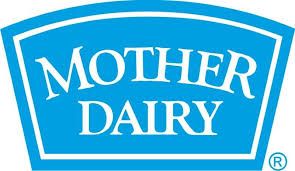http://www.dnaindia.com/money/report-milkmen-in-north-cry-mother-dairy-laughs-all-the-way-to-bank-1667390
Milk imports, farmer distress, and Mother Dairy’s profits
RN Bhaskar — 26 March 2012
Mother Dairy’s monthly earnings are anywhere between Rs72 crore and Rs117 crore more than those of rival Gujarat Cooperative Milk Marketing Federation.
For the last three months, Mother Dairy Fruit & Vegetable, a wholly owned subsidiary of National Dairy Development Board (NDDB), has been laughing all the way to the bank.
Its monthly earnings are anywhere between Rs72 crore and Rs117 crore more than those of rival Gujarat Cooperative Milk Marketing Federation (GCMMF), which makes and markets the Amul range of products.
That’s because Mother Dairy has been procuring milk at prices that are Rs4-6.50 per litre lower than the Rs31 that GCMMF pays its farmers-members.
Unfortunately, this has been at the expense of small farmers in North India who now get Rs17 for every litre of milk they sell to Mother Dairy compared with Rs30 earlier.
But Mother Dairy hasn’t changed the sale price of milk of Rs37 per litre (double-toned sells at lower prices).
The Mother Dairy management, however, refutes procurement is at Rs17 a litre.
“It is the dudhiya, the middleman, who sources milk at Rs17. Our farmer prices are between Rs24.50 and Rs27 a litre,” said a senior official.
But that doesn’t change the fact that a wholly owned subsidiary of a government body is milking additional profit – if you just compare the procurement prices of last year.
That’s in sharp contrast to what has been happening in the co-operative sector. In western India, farmers continue to get the old price of milk, and the price to consumers remains the same.
GCMMF, on the other hand, recently increased by Rs1 per litre the price it pays to its member-farmers for each litre of milk it procures (it now pays Rs31).
And the selling price still remains the same at Rs38 (for the whole milk grade).
In south India, where the government has introduced a minimum support price (MSP) for milk procurement, the consumer price fluctuates from time to time. As a result, companies such as Hatsun (sales of around Rs1,600 crore) have found the going quite rough.
A similar situation confronts north Indian milk companies such as Paras (sales: Rs896 crore) and Gopalji (sales: Rs500 crore), who feel being squeezed out — though some have tried to make a dent in Delhi by undercutting Mother Dairy.
Unfortunately, there is no price support mechanism in the north. “That’s because the dhudhiyas have powerful political backing. They block our vehicles and prevent us from collecting milk,” said a spokesperson for Mother Dairy.
While that may be the case, the increased spreads of Mother Dairy — it has refused to send its annual reports to DNA despite several requests) — show which way the benefits are flowing.
“Mother Dairy also enjoys having kiosks at strategic locations to sell milk without any significant rental expenses. It enjoys the privilege of being a cooperative without functioning like one,” said an industry source.
Compounding the woes is the ban on exports of milk by the ministry of agriculture in February last year. Not that India’s milk exports are large — they comprise a little over 1 lakh tonnes a year, or 1% of milk and milk product exports.
To be fair, the ban did have a psychological effect, cooling prices a touch.
But it was at that time that NDDB made a request to the government to allow it to import, duty-free, 50,000 tonnes of skimmed milk powder (SMP), which it is believed to have got at quite attractive rates. NDDB was also allowed to import, duty free, 15,000 tonnes of butter oil too.
This, however, did not please the industry. On November 11, 2011, at a meeting chaired by the secretary, dairy and animal husbandry, ministry of agriculture, industry players tried persuading NDDB to desist purchasing milk from overseas suppliers and offered 20,000 tonnes of SMP too.
But NDDB bought just 5,000 tonnes and opted to import 50,000 tonnes. Industry players want the ban on exports to go. Amul also made a formal communication to the government two weeks ago to remove this ban.
The net result of all this is that India now has 1 lakh tonnes of surplus milk, plus 50,000 tonnes of SMP and 15,000 tonnes of butter oil.
Not surprisingly, prices at the farmer level in non-co-operative sectors of north India crashed, instead of merely cooling.
Retail prices to consumers in many parts of north India from non-Mother Dairy outlets have also fallen, but have made little impact because they do not have the branding and distribution clout of a Mother Dairy.
However, some cooperatives such as Saras in Rajasthan and Vita in Haryana have been more fair in reducing consumer prices for milk when procurement prices fell. Mother Dairy has not done so.
Not surprisingly, there has been a renewed clamour for the removal of the ban on exports. The removal of the ban could ease some of the problem. There is also an increased discomfort at the close relationship between NDDB and Mother Dairy.
There is a third demand as well. Ever since NDDB decided to get the government to grant it the status of a deemed financial institution, many believe that NDDB has begun working more as a financier than as a development institution that it was meant to be.
It recently informed the media that the World Bank would soon approve the first phase of the Rs17,000 crore National Dairy Plan worth around Rs2,000 crore.
NDDB hopes to promote some joint venture companies and new-generation-cooperatives. Analysts fear that instead of promoting the co-operative sector and small farmers, NDDB could actually hurt the interests of both small farmers and the cooperative movement.
Analysts said milk procurement in the north has plummeted by half over the past five years. At UP cooperatives, it has dropped from 10 lakh tonnes to barely about 5 lakh now (much of the milk goes to private players, and Mother Dairy, a private company though owned by NDDB, also tries to procure from the same pool).
Contrast this with Gujarat where the GCMMF saw its procurement swell from 75 lakh tonnes to 140 lakh tonnes during this period.
Nevertheless UP continues to account for 47% of the milk produced in India (Gujarat accounts for 38%). But in the face of falling farmer prices, banned export, and the non-promotion of co-operatives on the one hand and the absence of an MSP on the other, UP (and therefore India) could see a fall in milk production soon.










































COMMENTS